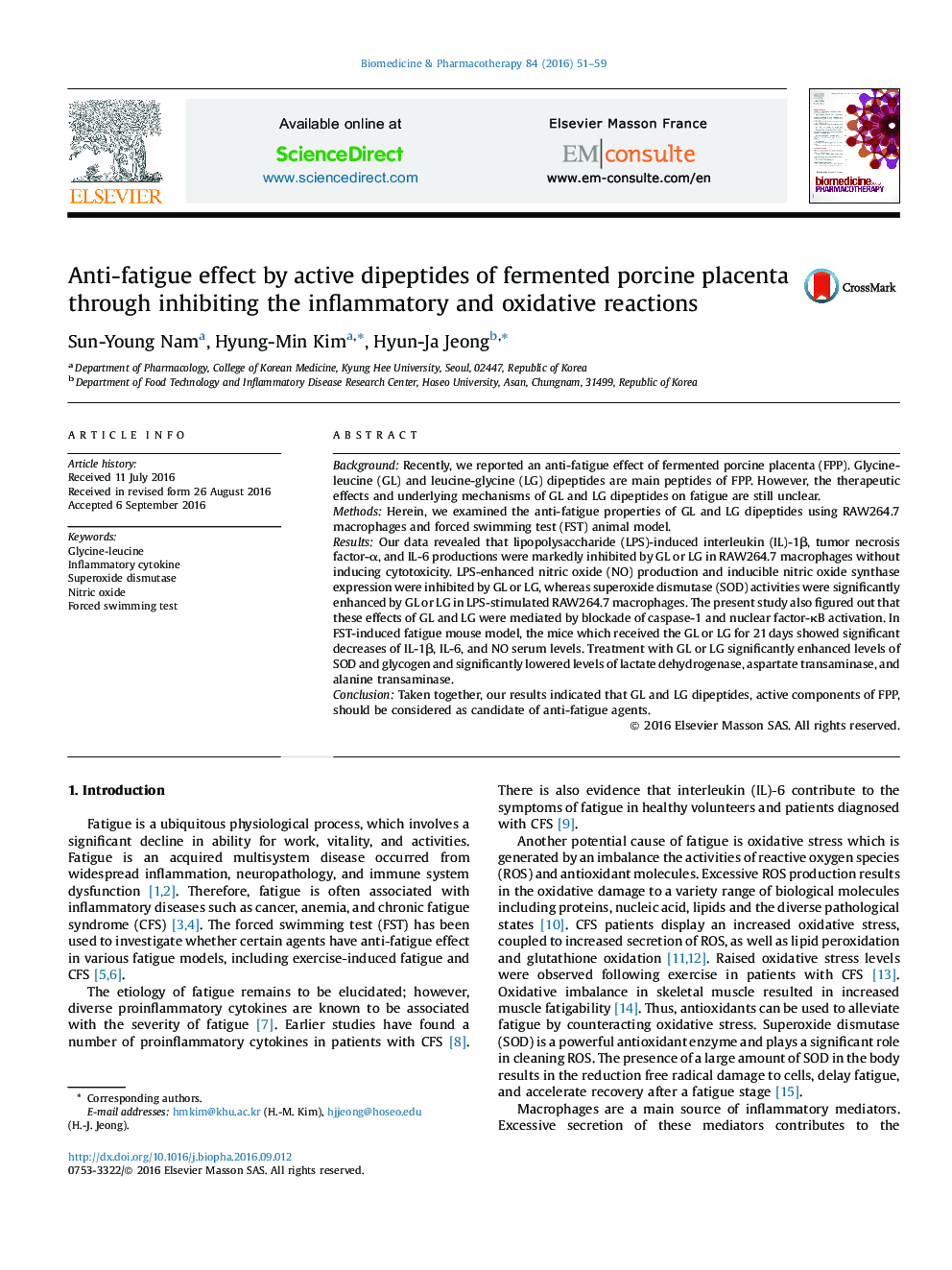| Article ID | Journal | Published Year | Pages | File Type |
|---|---|---|---|---|
| 5553341 | Biomedicine & Pharmacotherapy | 2016 | 9 Pages |
BackgroundRecently, we reported an anti-fatigue effect of fermented porcine placenta (FPP). Glycine-leucine (GL) and leucine-glycine (LG) dipeptides are main peptides of FPP. However, the therapeutic effects and underlying mechanisms of GL and LG dipeptides on fatigue are still unclear.MethodsHerein, we examined the anti-fatigue properties of GL and LG dipeptides using RAW264.7 macrophages and forced swimming test (FST) animal model.ResultsOur data revealed that lipopolysaccharide (LPS)-induced interleukin (IL)-1β, tumor necrosis factor-α, and IL-6 productions were markedly inhibited by GL or LG in RAW264.7 macrophages without inducing cytotoxicity. LPS-enhanced nitric oxide (NO) production and inducible nitric oxide synthase expression were inhibited by GL or LG, whereas superoxide dismutase (SOD) activities were significantly enhanced by GL or LG in LPS-stimulated RAW264.7 macrophages. The present study also figured out that these effects of GL and LG were mediated by blockade of caspase-1 and nuclear factor-κB activation. In FST-induced fatigue mouse model, the mice which received the GL or LG for 21 days showed significant decreases of IL-1β, IL-6, and NO serum levels. Treatment with GL or LG significantly enhanced levels of SOD and glycogen and significantly lowered levels of lactate dehydrogenase, aspartate transaminase, and alanine transaminase.ConclusionTaken together, our results indicated that GL and LG dipeptides, active components of FPP, should be considered as candidate of anti-fatigue agents.
